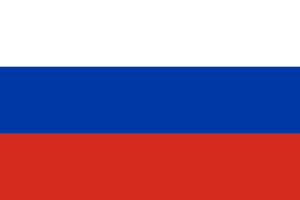Language/Russian/Vocabulary/Introduction-to-Russian-Pronunciation
As a long-time Russian language teacher, I am thrilled to introduce you to the beautiful Russian language! This Complete 0 to A1 Russian Course will take you through all the essential topics step-by-step, from learning the Cyrillic alphabet to mastering the basic vocabulary and grammar rules.
In this lesson, we will start by learning the Cyrillic alphabet and its corresponding sounds. Then, we will move on to the basic pronunciation rules of the Russian language. This is a fundamental lesson that you need to master before moving on to the more advanced topics. Let's get started!
Learning the Cyrillic Alphabet
Before we start learning the Cyrillic alphabet, let me give you some cultural information about it. The Cyrillic alphabet was named after the monk, St. Cyril, who, with his brother St. Methodius, created the first Slavic alphabet in the 9th century. The Cyrillic alphabet has come a long way since then and is now used to write over 50 languages, including Russian, Ukrainian, Bulgarian, and Serbian.
Now, let's dive into the Cyrillic alphabet. There are 33 letters, several of which are similar to letters in the English alphabet but with different sounds. Some of the Cyrillic letters do not have a direct equivalent in English.
We have a table below that shows all the letters, and their corresponding sounds in the Russian language. The table is organized as follows:
Column 1: Cyrillic Letter Column 2: Pronunciation (include IPA, transliteration, or Latin script) Column 3: English Translation
| Cyrillic Letter | Pronunciation | English Translation |
|---|---|---|
| А | A | A |
| Б | B | B |
| В | V | V |
| Г | G | G |
| Д | D | D |
| Е | Ye | Ye |
| Ё | Yo | Yo |
| Ж | Zh | Zh |
| З | Z | Z |
| И | I | I |
| Й | Y | Y |
| К | K | K |
| Л | L | L |
| М | M | M |
| Н | N | N |
| О | O | O |
| П | P | P |
| Р | R | R |
| С | S | S |
| Т | T | T |
| У | U | U |
| Ф | F | F |
| Х | Kh | Kh |
| Ц | Ts | Ts |
| Ч | Ch | Ch |
| Ш | Sh | Sh |
| Щ | Shch | Shch |
| Ъ | Hard Sign | Hard Sign |
| Ы | Y | Y |
| Ь | Soft Sign | Soft Sign |
| Э | E | E |
| Ю | Yu | Yu |
| Я | Ya | Ya |
Make sure you take your time to learn the Cyrillic alphabet, as it is the base of the Russian language. Being able to read and write in Cyrillic will help you make progress in other areas of the language.
Introduction to Russian Pronunciation
Congratulations on learning the Cyrillic alphabet! Now, let's move on to the basics of Russian pronunciation. In this section, we will cover some of the key rules that will help you correctly pronounce Russian words.
One of the unique aspects of the Russian language is that vowels can be either stressed or unstressed, and this can affect their sound. For instance, the “о” in “молоко” (milk) is pronounced differently than the “о” in “молокосос” (milkman) because of their different stress patterns.
Russian also has soft and hard consonants, which can also affect the sound of a word. For instance, the “к” in “кот” (cat) is pronounced differently than the “к” in “коттедж” (cottage) because the “т” in the second example makes it a hard consonant.
We have provided some examples in the table below:
| Russian | Pronunciation | English |
|---|---|---|
| Кошка (koshka) | k-oh-sh-kah | Cat |
| Кошак (koshak) | k-oh-sh-ah-k | Tomcat |
| Молоко (moloko) | mah-lah-koh | Milk |
| Молокосос (molokosos) | mah-lah-kah-sahs | Milkman |
There are other nuances to the Russian pronunciation, but these are some of the basic rules that will help you get started. As you progress with the language, you will discover there are many more interesting aspects to discover.
Congratulations again on making it through this lesson on Introduction to Russian Alphabet into Introduction to Russian Pronunciation. Keep up the good work, and I will see you in our next lesson.
Sources
- Russian Phrases and Words for Travelers
- Russian language - Wikipedia
- The Only Russian Pronunciation Guide You'll Ever Need
Videos
Introduction to Perfect Russian Pronunciation - YouTube
Learn Russian - Introduction to Russian Pronunciation - YouTube
Related Lessons
- Colors
- Greetings and Introductions
- House
- Parts of the Body
- Family
- Trees
- Count to 10
- Russian idioms
- Fruits
- Flowers

